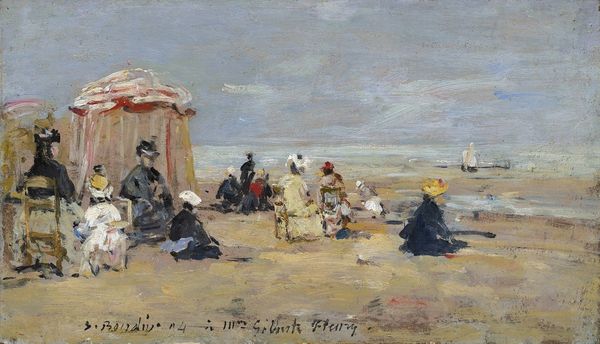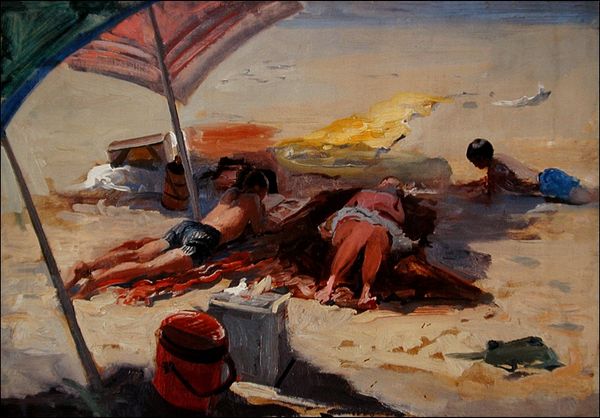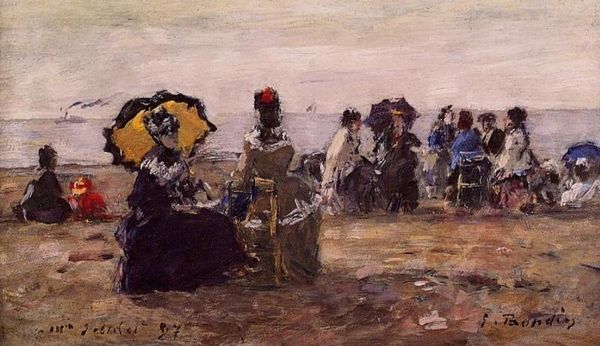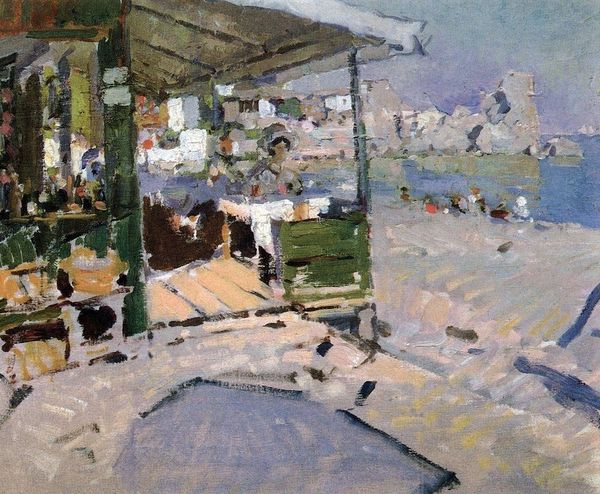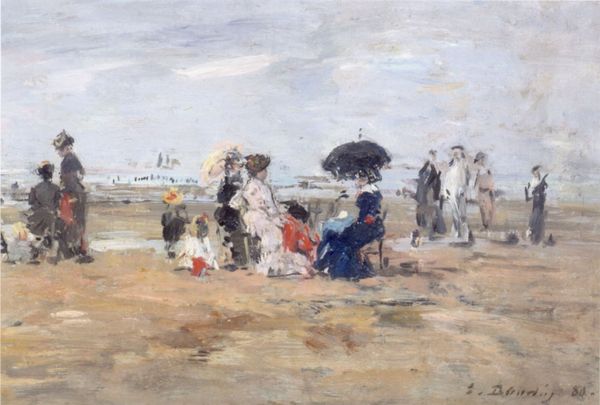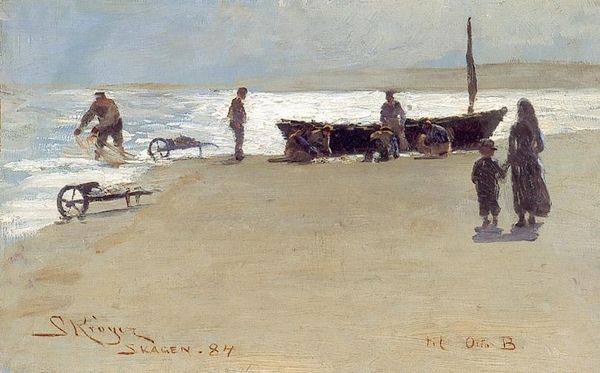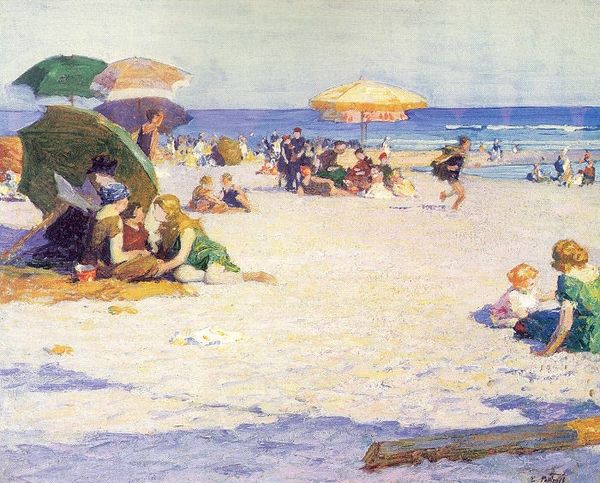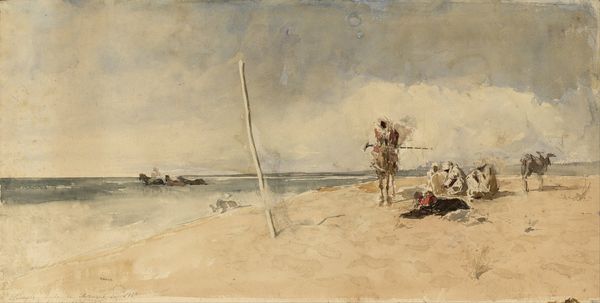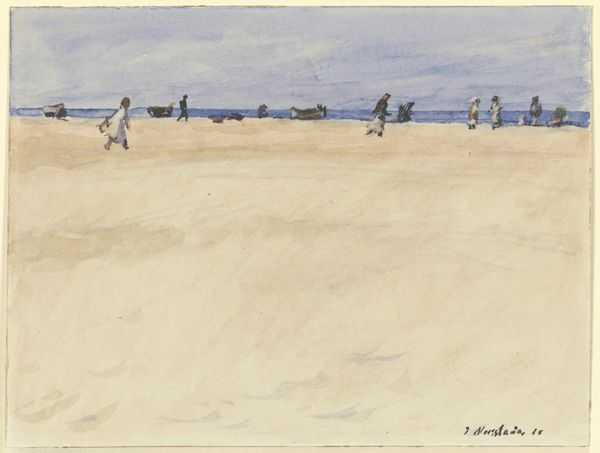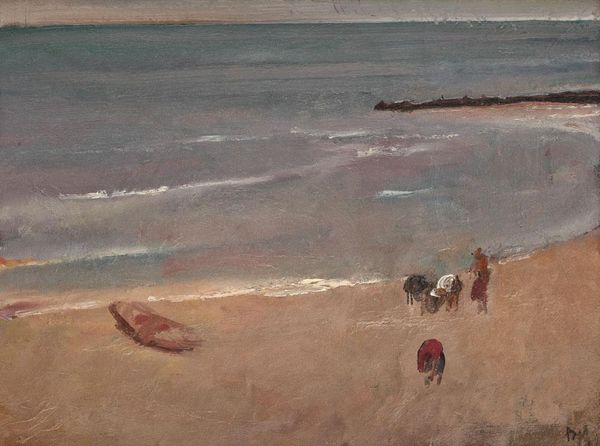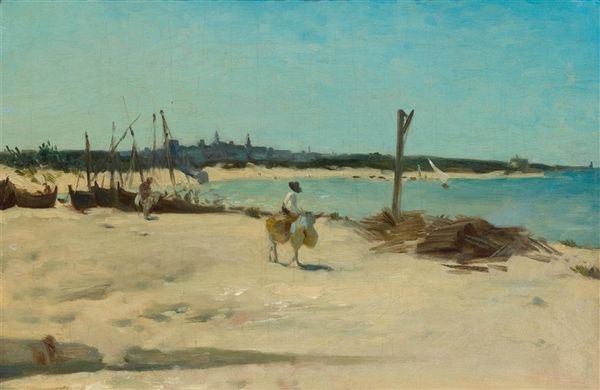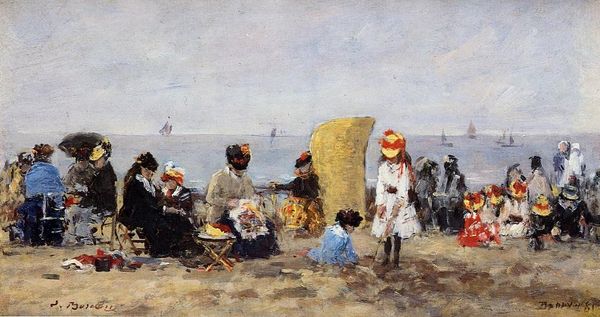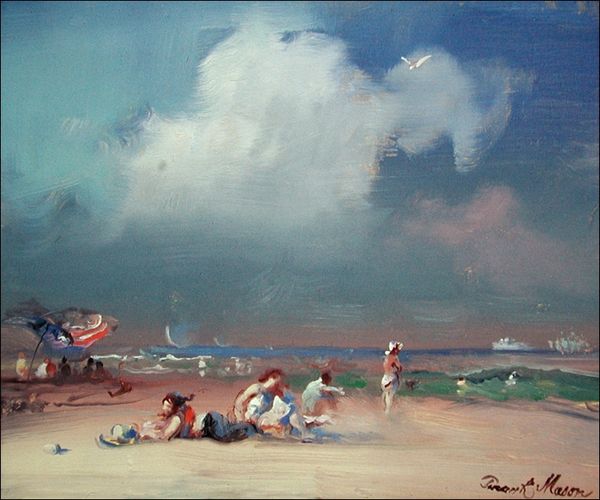
#
glasgow-school
Copyright: Public domain
Editor: This is "Bathing in the Lido, Venice" by Sir John Lavery, painted in 1912. It appears to be oil on canvas. It has a dreamlike quality. What elements stand out to you in terms of form and structure? Curator: Note the subtle layering of horizontal bands. From the foreground up, Lavery presents dark shadows which subtly fade to beige, then light, sky-blue, eventually dissolving into almost pure light above. This layering is disrupted by verticals; note the structural timbers, and human figures scattered along the beach. The composition offers a series of contrasts. Can you see the repetition of curves and lines? Editor: Yes, the umbrellas mimic the curvature of the shoreline, and the supporting beams contrast with the angle of the beach chairs. Curator: Precisely! The artist orchestrates our movement into the pictorial space through colour as well. Light, high-key colours versus more deeply saturated areas of dark shade offer a sense of depth. Consider the overall impression of light. How do you think this might relate to plein-air painting? Editor: I see the interplay of light and shadow as the central component of the work. I guess being painted on location gave Lavery an intimate view of natural sunlight at that moment. Curator: The broken brushstrokes play an integral role in the creation of diffused light, typical of Impressionism. Are there aspects you find compelling or perhaps unresolved? Editor: I find the seemingly spontaneous composition fascinating, giving the impression of an unfiltered, captured moment, rather than a carefully constructed scene. Curator: Yes. Through nuanced deployment of these painterly strategies, Lavery generates an experience akin to being present in the scene itself.
Comments
No comments
Be the first to comment and join the conversation on the ultimate creative platform.
